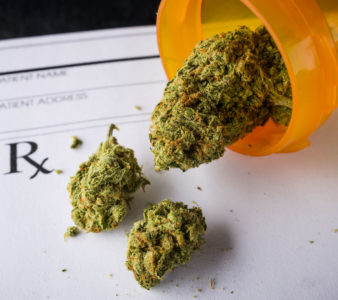 New research has found that nearly one-third of patients with chronic pain report using medical cannabis to manage their pain, with more than half of them decreasing their reliance on other pain medications, like opioids, in the process.
New research has found that nearly one-third of patients with chronic pain report using medical cannabis to manage their pain, with more than half of them decreasing their reliance on other pain medications, like opioids, in the process.
“That patients report substituting cannabis for pain medicines so much really underscores the need for research on the benefits and risks of using cannabis for chronic pain,” said lead author Mark C. Bicket, MD, PhD, assistant professor, Department of Anesthesiology, and director, Opioid Prescribing Engagement Network, University of Michigan, Ann Arbor, in an interview with Medscape Medical News.
Medical Cannabis Use
For the study, researchers surveyed 1,724 Americans over the age of 18 with chronic noncancer pain living in areas where medical cannabis was available. Participants were asked about their use of three different types of pain management:
- Medical marijuana
- Pharmacologic treatments like opioids, non-opioid analgesics and over-the-counter medications
- Non-pharmacologic treatments like physical therapy, cognitive behavioral therapy or mindfulness
After looking at the survey results, researchers found that 25.9 percent of respondents reported using medical cannabis within the last year, and 23.2 percent reported using it within the past 30 days. More than half of patients who said they used medical cannabis said this also led to a decrease in prescription opioid use, prescription non-opioids and over-the-counter medications. “Almost no one” said that medical cannabis led to a higher use of these medications, said Dr. Bicket.
Medical cannabis use also impacted other treatments as well, for the good and the bad. 38.7 percent of people said that cannabis use led to decreased physical therapy sessions, 19.1 percent said it led to lower use of meditation, and 26 percent said it led to less CBT. Conversely, 5.9 percent of patients said cannabis use led to more physical therapy, 23.7 percent said it led to more meditation therapy, and 17.1 percent said it led to more CBT, so cannabis use clearly had a more widespread variance on other therapies than it did on pharmacological treatments, which saw a very obvious decreased correlation.
While Bicket was pleased with the findings, he noted that the current environment – where cannabis use is medically approved on some state levels but illegal on the federal level – makes it harder to accurately study the best ways to implement cannabis use for a patient population.
“We really don’t have a good sense of the relative risks and benefits that could come from cannabis as a treatment for chronic pain,” said Bicket. “As a physician, it’s difficult to have discussions with patients because I’m not able to understand the products they’re using based on this regulatory environment we have.”
Bicket seems to have the same gripes about the current medical marijuana climate that we have about chronic pain care in general. For one reason or another, we’re not able to easily study the best ways to treat chronic pain or harness the power of certain treatments like medical marijuana. Hopefully the landscape changes in the near future so that patients can have better access to the right treatments for their individual needs.